An RBC is essentially a bag of...?
Haemoglobin
What is the average diameter of an RBC? Is it able to deform?
8 microns in size, and is able to deform and pass through 3 micron capillaries or reticuloendothelial system without fragmentation.
What 3 things does the cell membrane consist of?
-Proteins
-Lipids
-Carbohydrates
What are the % proportions of these components of the Red cell membrane?
-Proteins (50%)
-Lipids (40%)
-Carbohydrates (10%)
What is the structure of the red cell membrane?

-A semi-permeable lipid bilayer; with proteins scattered throughout:
+an outer hydrophilic portion composed of glycolipids. Glycoproteins and proteins
+A central hydrophobic layer containing proteins, cholesterol and phospholipids
+An inner hydrophilic layer of mesh-like cytoskeletal proteins to support lipid bilayer
What are the lipid components of the red cell membrane?
-Phospholipids
-Cholesterol
-Sphingolipids
What are the % proportions of these components of the lipid Red cell membrane?
-Phospholipids (60%)
-Cholesterol (30%)
-Sphingolipids (10%)
State some information about phospholipids and the Membrane (7 points)
-Have fatty acid tails that are hydrophobic
-Have a phosphate group head that is hydrophilic
-Arranged in a bilayer
-Asymmetric phospholipid distribution
-Unesterified free cholesterol between
-Uncharged phospholipids of outer layer (Phosphatidyl choline and Sphingomyelin)
-Charged phospholipids of inner layer:
+Phosphatidyl ethanolamine
+Phosphatidyl serine
What are integral membrane proteins?
They extend from the outer surface and traverse the entire lipid bilayer membrane to inner surface
What are the 2 major integral membrane proteins?
-Glycophorins:A, B and C
-Band 3: anion transporter
Other integral proteins include....?
Na+/K+ ATPase, Aquaporin 1, surface receptors, e.g. TfR
What are peripheral proteins?
-Limited to cytoplasmic surface of membrane and forms the RBC cytoskeleton
-The cytoskeleton acts as a tough framework to support the bilayer responsible for deformability and maintains biconcave shape.
Major peripheral proteins include:
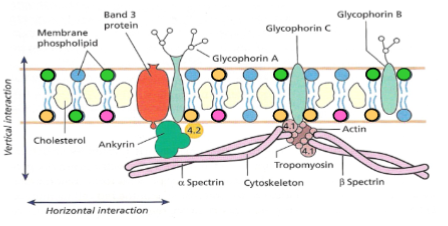
Spectrin, Ankyrin, Protein 4.1 and Actin
What is spectrin?
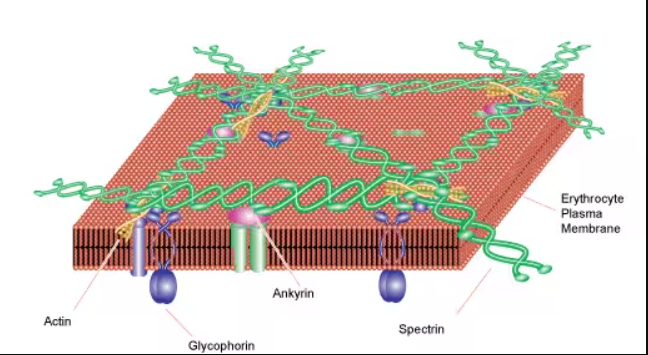
-The most abundant peripheral protein
-Composed of alpha and beta chains
-Very important in RBC membrane integrity
+Binds with other peripheral proteins to form the cytoskeletal network of microfilaments
-Controls biconcave shape and deformability of cell
-If denatured red blood cell becomes spherical, Loses flexibility
What is Ankyrin?
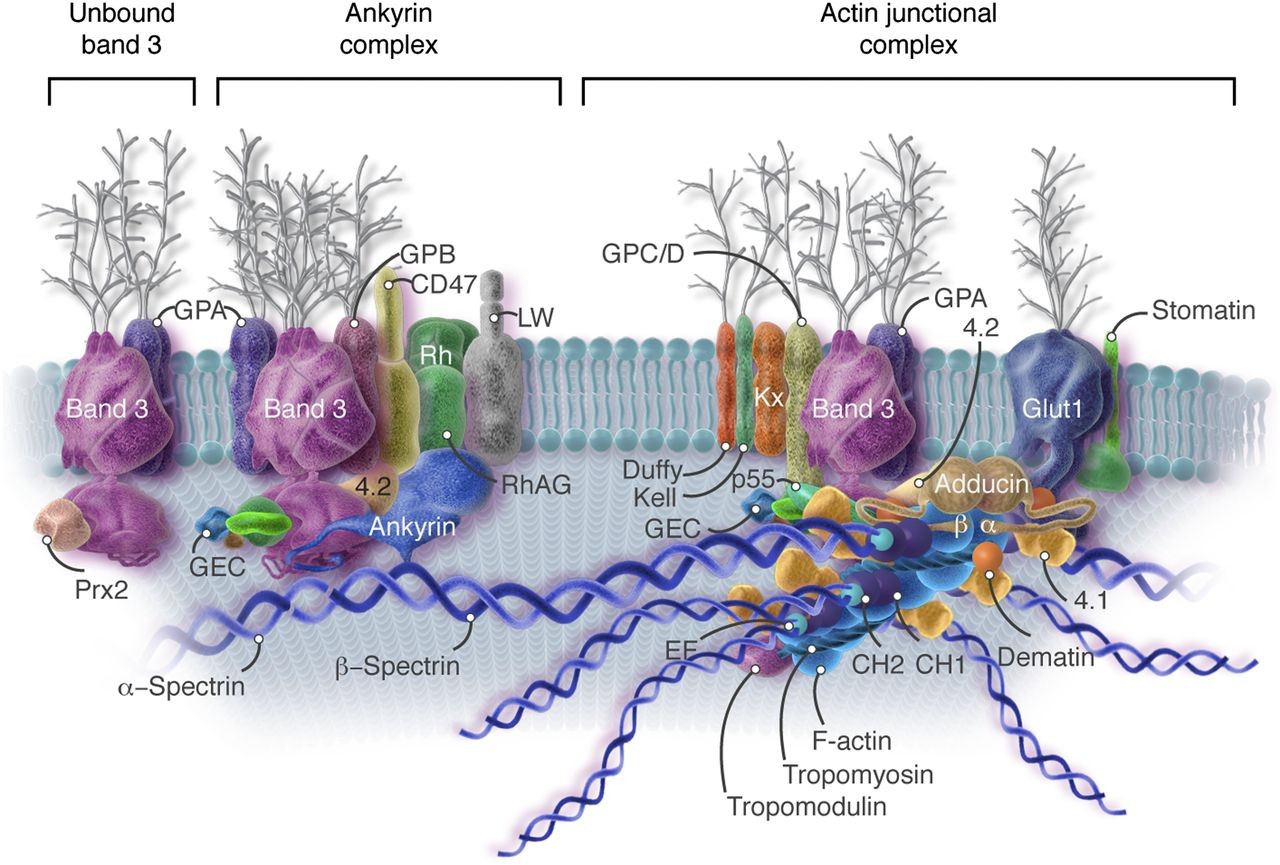
-Primarily anchors lipid bilayer to membrane skeleton via interaction with spectrin and Band 3
What is protein 4.1?
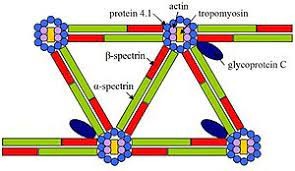
-May link the cytoskeleton to the membrane by means of its associations with glycophorin
-Stabilised interaction of spectrin with actin
What is Actin?
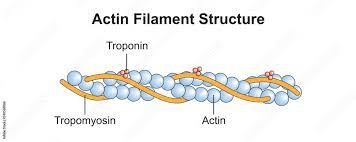
-Responsible for the contraction and relaxation of the membrane (Strong cohesion between bilayer and membrane skeleton maintains surface area)
What are carbohydrates?
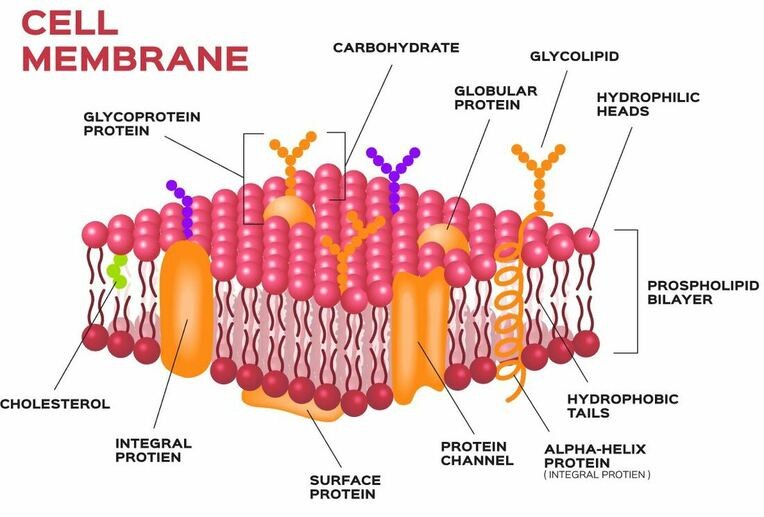
-They occur only on the external surface of cell
-The carbohydrate groups are attached to proteins and lipids by a process called glycosylation
-They may contain 2-60 monosaccharide units, either branched or straight
-The carbohydrate gives a cell identity; the distinguishing factor for human blood types
State ATLEAST 5 different monosaccharides that are found on the red cell membrane
-Galactose
-Mannose
-Fucose
-N-acetylgalactosamine
-Glucuronic acid
-Glucose
-Sialic acid
-N-acetylglucosamine
What determines are blood group?
Blood group antigens, which are found on the red cell membrane
Statement: The Majority of antigens are carbohydrates. Is this true or false?
FALSE
The majority of antigens are proteins; e.g. Rhesus, Duffy.
Others are carbohydrates; e.g. ABO
Others are combination of glycolipids and proteins
Picture illustrating idea in previous flashcard:
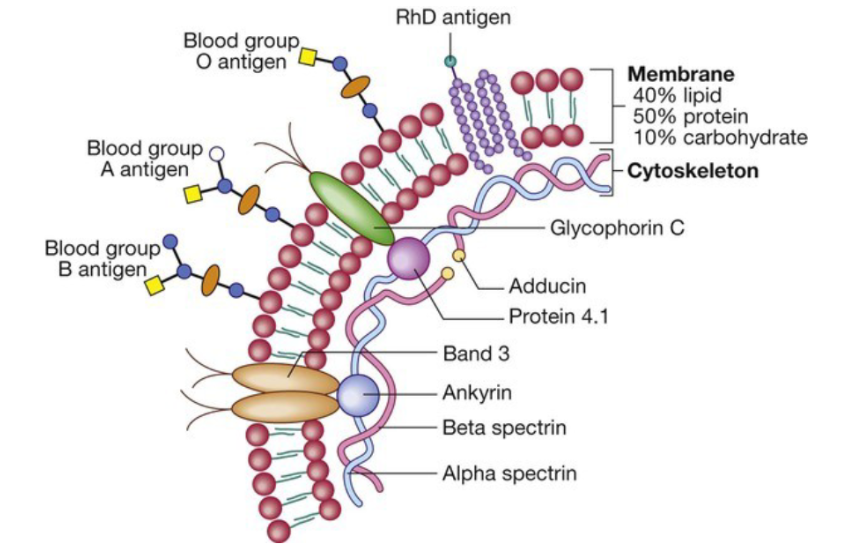
What is the primary function of RBC? And how is this achieved?
-Primary function of RBC is transport of respiratory gases to and from the tissues
-To achieve this, RBC traverse the microvascular system without mechanical damage and retain a shape which facilitates gaseous exchange
-The red cell membrane should be extremely tough yet highly flexible
+Cytoskeletal proteins interaction with the membrane lipid bilayer determines strength and flexibility
List 4 characteristics of the RBC and their importance
1)SHAPE: provides the optimum surface area to volume ratio for respiratory gases exchange
2)DEFORMABILITY, ELASTICITY: allowing for the passage through micro vessels (capillaries)
3) Regulates intracellular cation concentration
4)Acts as the interface between the cell and its environment via membrane surface receptors
Statement: Membrane cholesterol exists in free equilibrium with plasma cholesterol.... True or false?
TRUE
An increase in free plasma cholesterol results in an accumulation of what in the RBC membrane?

Cholesterol
RBCs with increased cholesterol appear distorted, which results in the formation of..........?
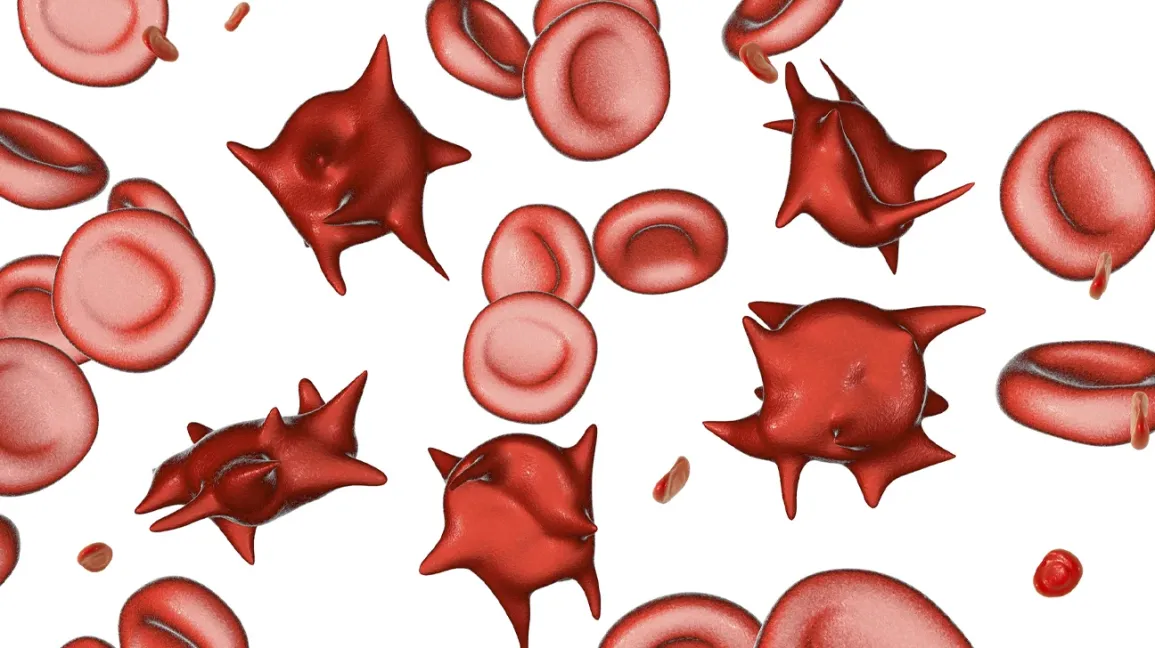
Acanthocytes
An increase in cholesterol and phospholipid is due to what?
Target cells; due to specifically high SA
What are the two possible defects in the RBC membrane?
1)Hereditary spherocytosis; Instead of RBC being shaped like a disk, the cells are round like a sphere
2)Hereditary Elliptocytosis; RBCs assume an elliptical shape, rather than the typical round shape
What is Hereditary Spherocytosis caused by?
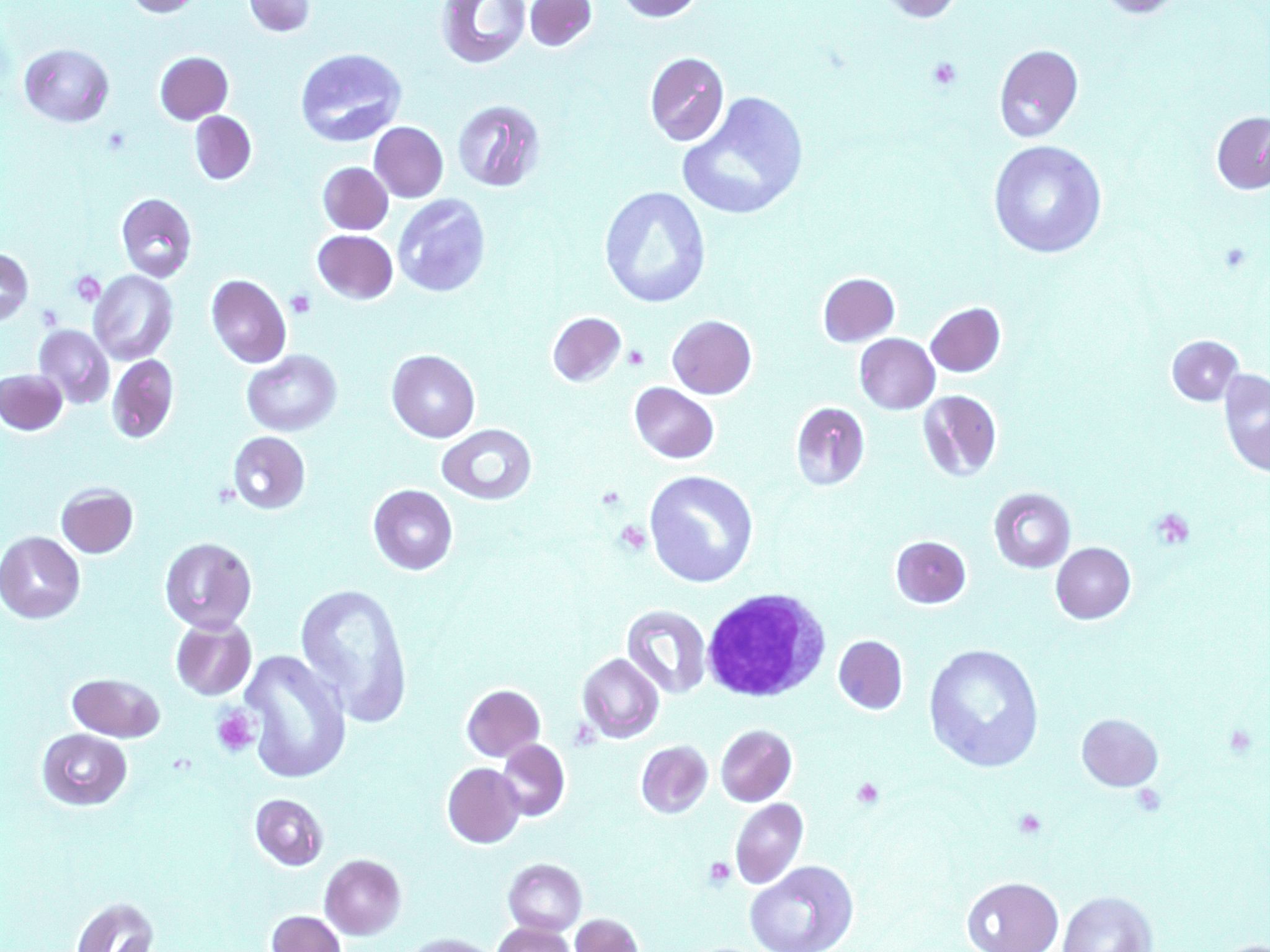
-Ankyrin deficiency or abnormalities
-a or b spectrin deficiency or abnormalities
-Band 3 protein abnormalities
-Protein 4.2 abnormalities
What is Hereditary Elliptocytosis caused by?
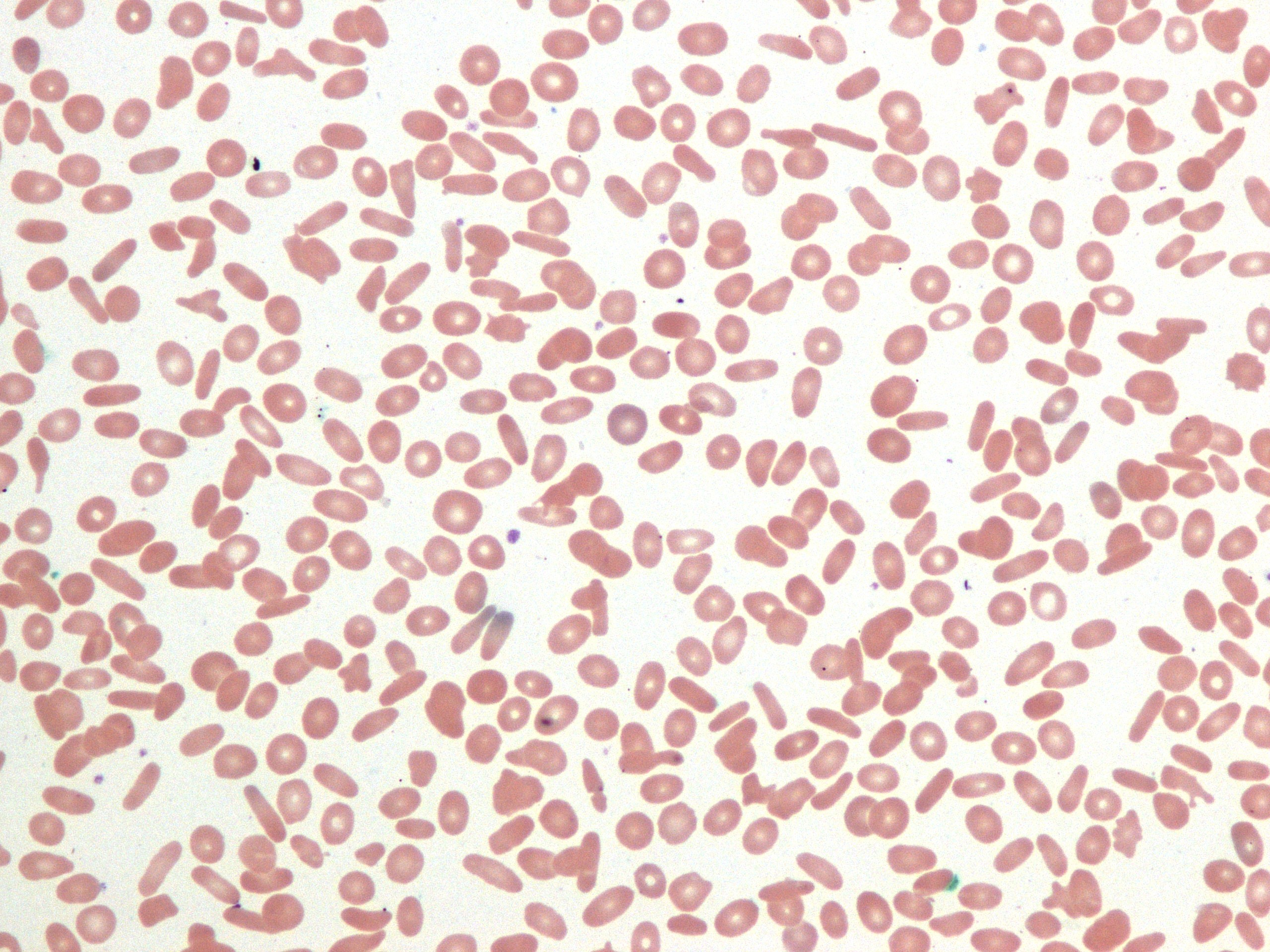
-a or b spectrin mutation - defective spectrin dimer
-a or b spectrin mutation - defective spectrin-ankyrin association
-Protein 4.1 deficiency or abnormalities
Picture demonstrating the various RBC shapes and sizes:
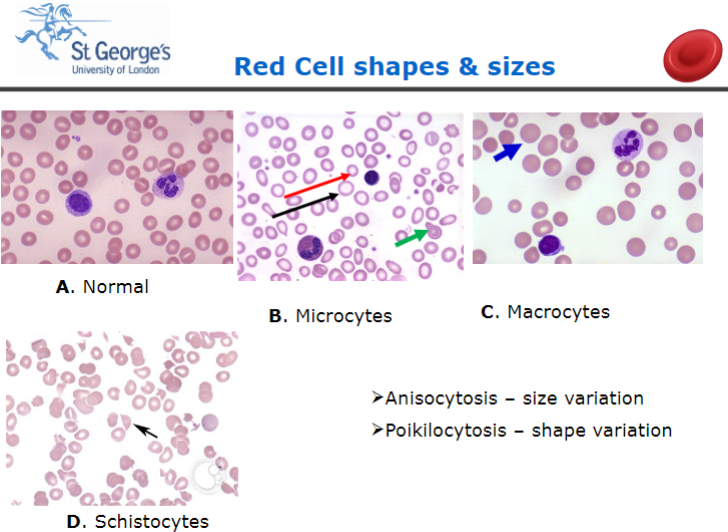
State some information about Haemoglobin structure
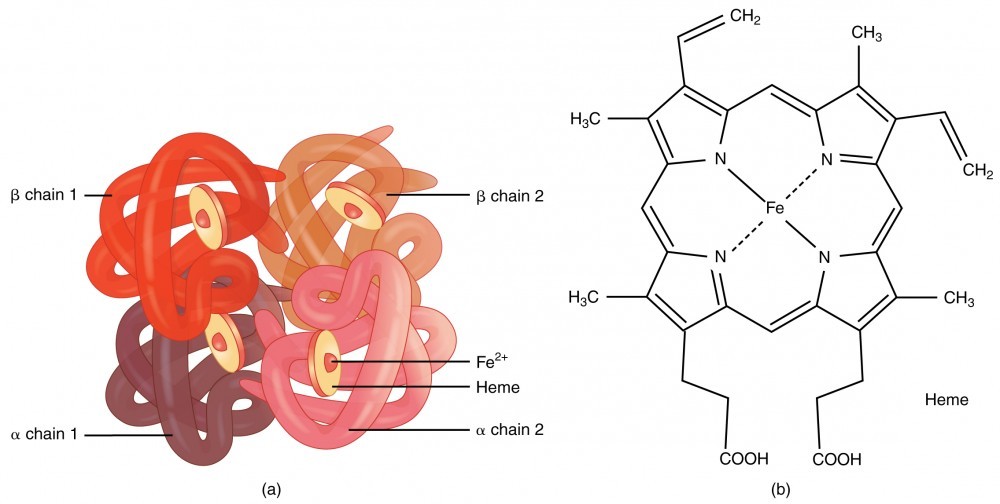
-Haemoglobin (Hb) is a globular haemoprotein-haemoproteins are a group of specialized proteins that containHaem as a tightly bound prosthetic group.-The haem is a complex of protoporphyrin IX and ferrousiron (Fe2+).-The protein here is globin: 4 polypeptide subunits-2 α-globin chains-2 β-globin chains
What is the Adult amounts of haemoglobin in adults (both male and female)?
Haemoglobin content (ADULT)Female 11.5- 15.5g/dlMale 13.5- 17.5g/dl
What does Haemoglobinopathies mean?
A group of recessively inherited genetic conditions affecting the haemoglobin component of blood
Inherited disorders of Hb can be split into 2 categories: what are these categories
1. Thalassaemias
2. Sickle Cell Disease
What are the two main metabolic pathways?
-The pentose phosphate pathway
-The glycolytic pathway
What are the two main enzymes associated with these pathways?
1.Glucose-6-Phosphate Dehydrogenase (G-6-PD)2.Pyruvate Kinase (PK)
State some information about the Glycolytic pathway (PK enzyme)
- Glucose is metabolized and generates two molecules of ATP(energy).- Generates 90- 95% of energy needed by RBC’s- Functions in the maintenance of RBC shape, flexibility and the cation pumps (Na/K pump)
Outline the series of reactions in the glycolytic pathway
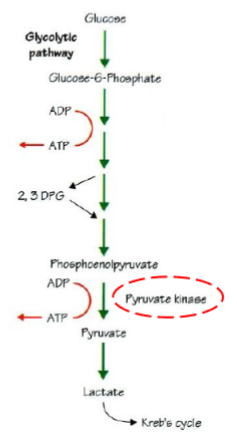
What is a PK deficiency, and what happens during a PK deficiency?
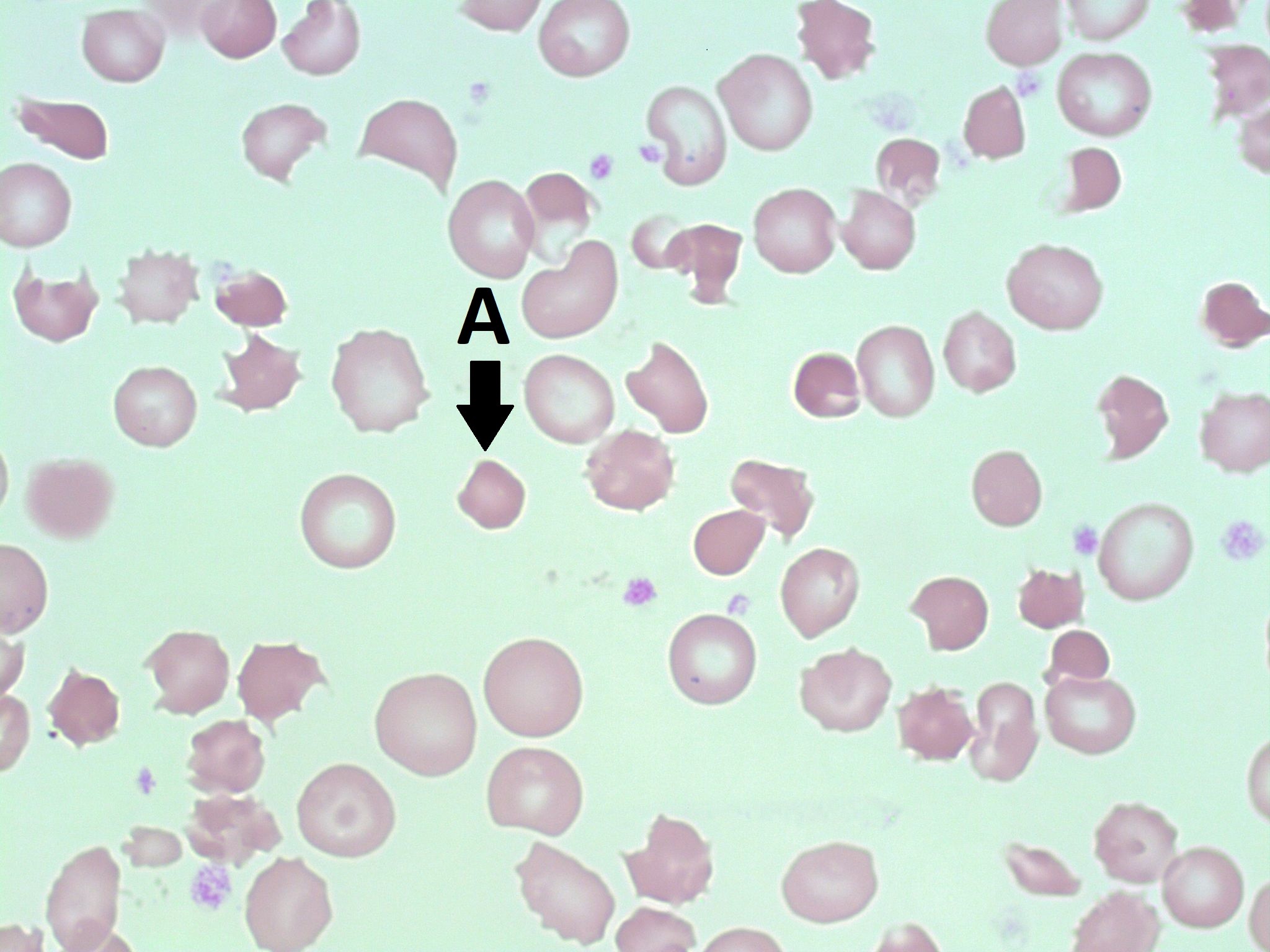
Pyruvate kinase deficiency is a condition in which red blood cells break down faster than they should.
-ATP is depleted
-Cells lose large amount of potassium and water, becoming dehydrated and rigid
-Causes chronic non-spherocytic haemolytic anaemia
State some information about the pentose phosphate pathway
- The pentose phosphate provides the reducing power,NADPH- NADPH maintains glutathione in the reduced form (GSH)- RBC uses GSH to protect it from oxidative damage;
Outline the series of reactions in the pentose phosphate pathway
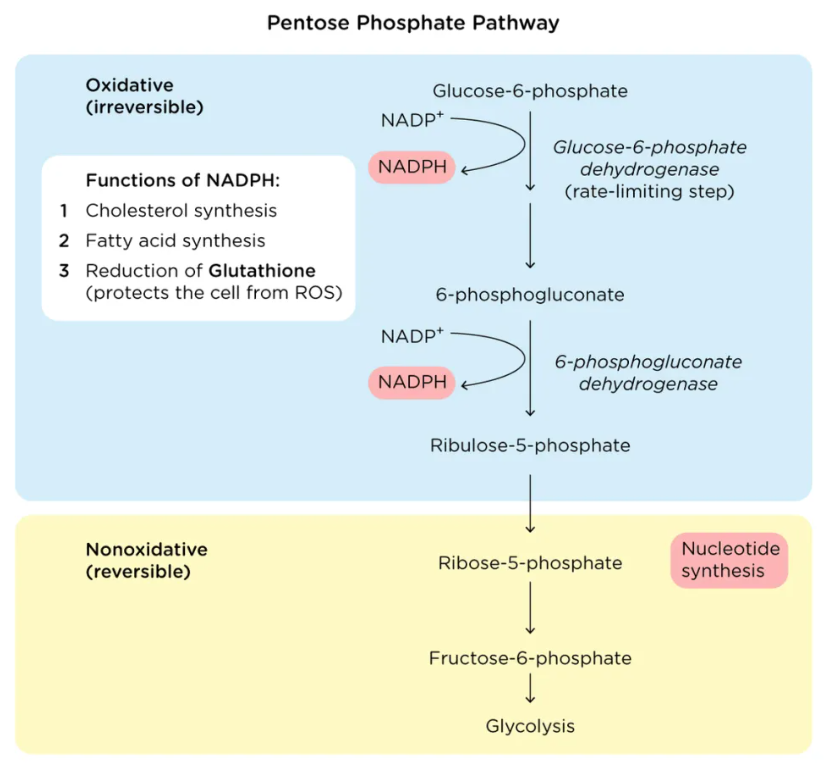
What is another name for the Pentose phosphate pathway?
Hexose monophosphate shunt
What causes a G6DP deficiency?
G6PD deficiency is inherited
What does a G6DP deficiency do?
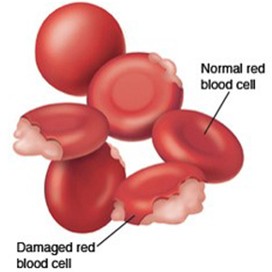
-NADPH and GSH generation impaired
+Acute intravascular haemolysis on exposure to oxidant stress: oxidativedrugs, fava beans (broad beans) or infections;=dark urine- Hb precipitation – Heinz bodies
- G6PD deficiency, most common known enzymopathy, estimated to affect 400 million people worldwide.
RBC effected are called bite cells
A general summary for this lecture:
RBC membrane is made of lipids, proteins and carbohydrates.- Glycophorin and spectrin are among the most importantproteins.- Spectrin plays important role in membrane deformability &stability- Biconcave disc shape creates an advantageous surfacearea/volume relationship- Changes to SA/V ratio result in more spherical shape withless redundant surface area, and thus less capacity fordeformability and diminished survival.- Key metabolic pathways required to maintain red cell integrityand deformability.